The Midwest Glacial Lakes Partnership (MGLP) is awarding $324,238 through its 2022 Lake Conservation Grant to five projects across the Upper Midwest. Together, these projects will benefit glacial lakes and their fish habitats, fish populations, and fisheries for years to come. Funds for the Lake Conservation Grant are provided by the US Fish and Wildlife Service and will be matched by over $1,597,000 in contributions from partners, for a total conservation impact of over $1,921,000. The five funded projects are:
- Assessing relationships between fisheries and aquatic vegetation to improve lake habitat management – $60,155
- Shoreline habitat restoration projects (MN) – $75,000
- Identifying and prioritizing lakes of biological significance (MN) – $37,646
- Lake Goguac stormwater diversion (MI) $75,000
- Midwest Glacial Lakes Partnership operations, $76,436
The MGLP’s request for the next round of Lake Conservation Grants is expected to be released in November through this newsletter. Those interested in future grant applications can find more information on the Lakes Conservation Grant page of the MGLP website and receive notifications through the MGLP Newsletter. Read more below about the projects that received funding this year.
Assessing relationships between fisheries and aquatic vegetation to improve lake habitat management – University of Wisconsin-Madison Center for Limnology
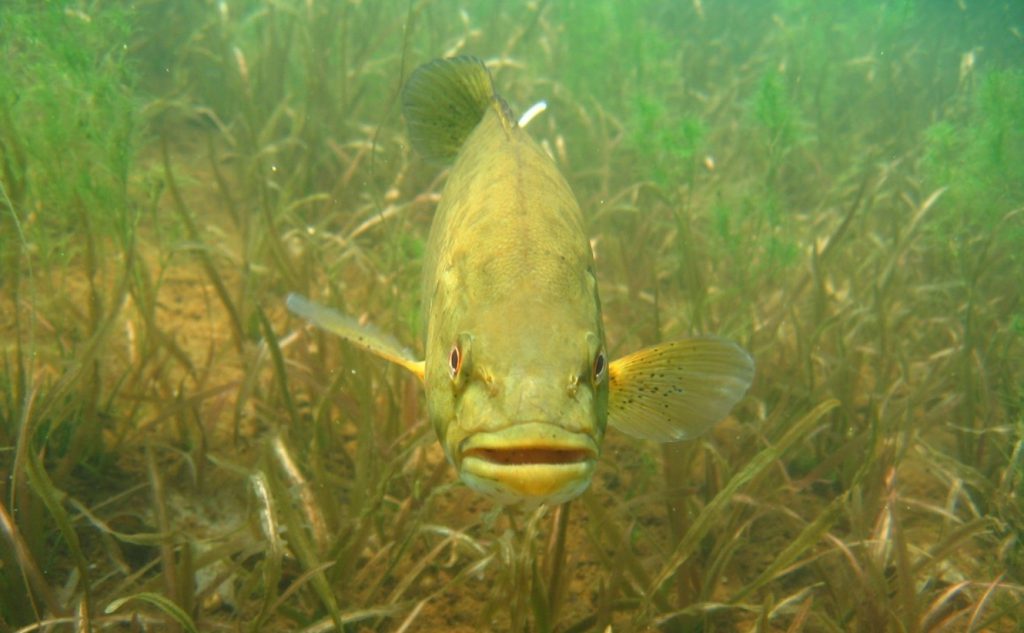
Interactions between aquatic vegetation and fish are poorly understood, leading to substantial uncertainty in how to manage aquatic plants to support fisheries goals. By combining extensive datasets for macrophyte and fish communities across thousands of lakes in the MGLP, this project will augment the lake management toolbox by quantitatively linking aquatic vegetation and its management to recreational fisheries. It will help to answer two specific questions that are high priorities for lake managers, which are: 1) What is the importance of aquatic vegetation for walleye recruitment, either as spawning or juvenile habitats? and 2) How can aquatic vegetation management be used to manage and support popular recreational fisheries, including panfish, bass, and walleye? These assessments will be provided to biologists, lake associations, and other stakeholders using workshops, seminars, factsheets, and data visualization tools, allowing managers to contextualize lake performance, identify lakes where habitat management could yield fisheries benefits, and learn about the benefits aquatic vegetation can provide toward meeting lake management goals.
Shoreline habitat restoration projects – Stearns County (MN) Soil and Water Conservation District
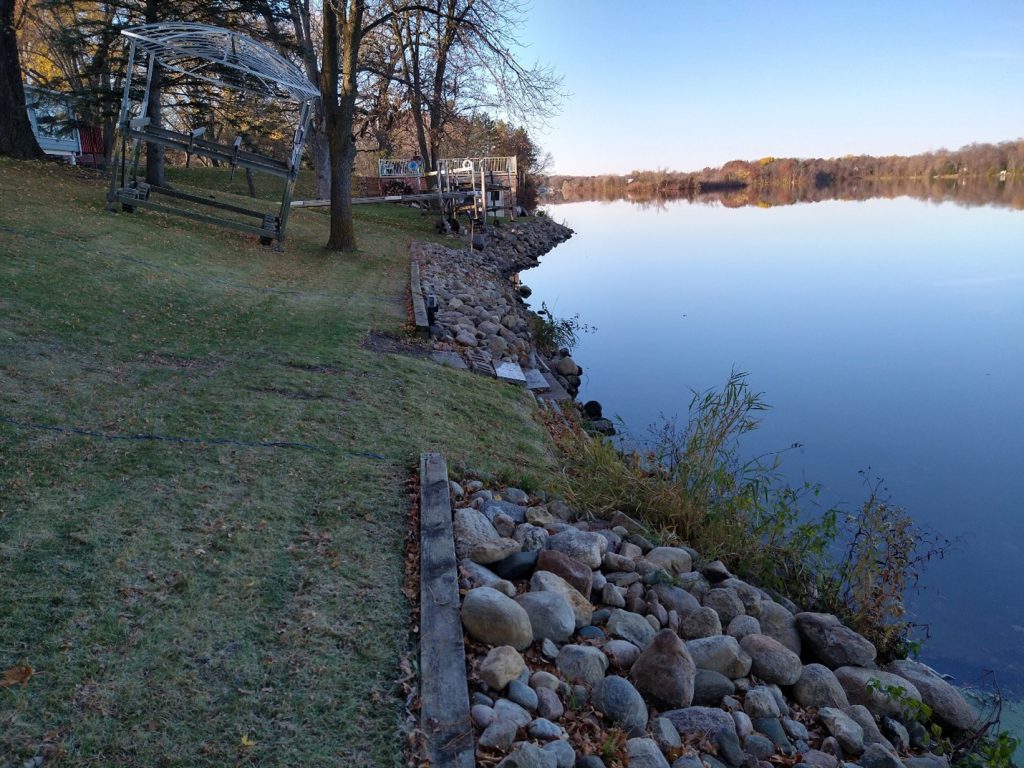
The Stearns County Soil and Water District’s shoreline habitat restoration projects will continue to build on the strong habitat restoration and protection efforts on glacial lakes in this Minnesota county. Each of these projects will use natural techniques including native grasses, wildflowers, trees, shrubs, vines and various bio-engineering techniques that use wood and footer rock above and below the Ordinary High Water Level. The project will expand and protect fish and wildlife habitat including reduction of sediment and nutrients to the lake as well as physical habitat for shoreland animals. Landowners at restored sites will serve as ambassadors for shoreline restoration. The landowners will welcome other property owners to view their properties, understand the benefits, see what changes have been made, and consider making similar changes on their own properties.
Identifying and prioritizing lakes of biological significance – Northern Waters Land Trust (MN)
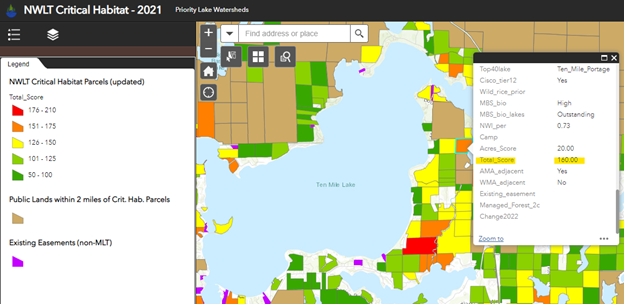
Since its founding, Northern Waters Land Trust (NWLT) has perpetually protected over 5,800 acres of land and approximately 241,000 feet of environmentally sensitive shoreline in its service area. NWLT has an existing evaluation framework and online map that displays conservation priorities for prioritized tullibee (Cisco) refuge lakes (see map image above). This project will expand the existing framework to include 391 Lakes of Biological Significance that have unique plants or animals present. The project will prioritize conservation of specific parcels within the sensitive watersheds of these priority lakes and showcase this data on an interactive map. NWLT’s proposed methodology is key for conservation efforts directed at mitigating the impacts of shoreline development, climate change, deforestation, and more. The results of this grant will be essential in helping NWLT continue its permanent land conservation efforts in this developing region.
Lake Goguac stormwater diversion – City of Battle Creek (MI)
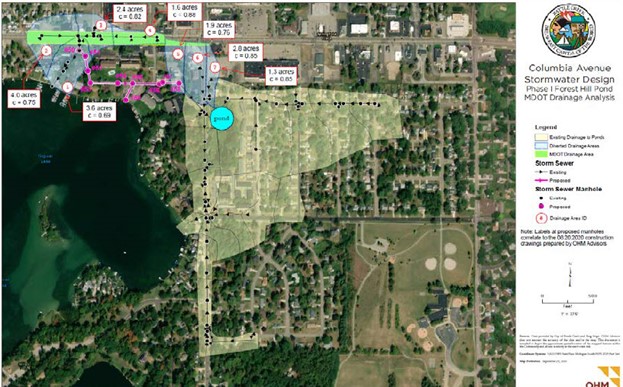
The City of Battle Creek (City) is seeking funding to protect and improve the water quality in Goguac Lake, a 352-acre lake located within the City. Goguac Lake is a valued resource, providing recreational opportunities, wildlife habitat and a range of economic services to the region. The proposed project would improve the water quality and fisheries habitat in Goguac Lake by eliminating stormwater additions from 34.6 acres of urban commercial and residential areas within the city, resulting in a pollutant load reduction of 54.5 pounds of phosphorus and 14,678 pounds (7.3 tons) of sediment, annually. The stormwater would be piped via the City’s storm sewer network to two existing stormwater detention ponds with excess capacity to infiltrate the additional stormwater generated from the 34.6 acres. The requested funding is for engineering design, construction, and related infrastructure modifications. These improvements to water quality are expected to improve fish habitat in Goguac Lake benefitting anglers, boaters, and all other users.
Midwest Glacial Lakes Partnership operations – Michigan Department of Natural Resources
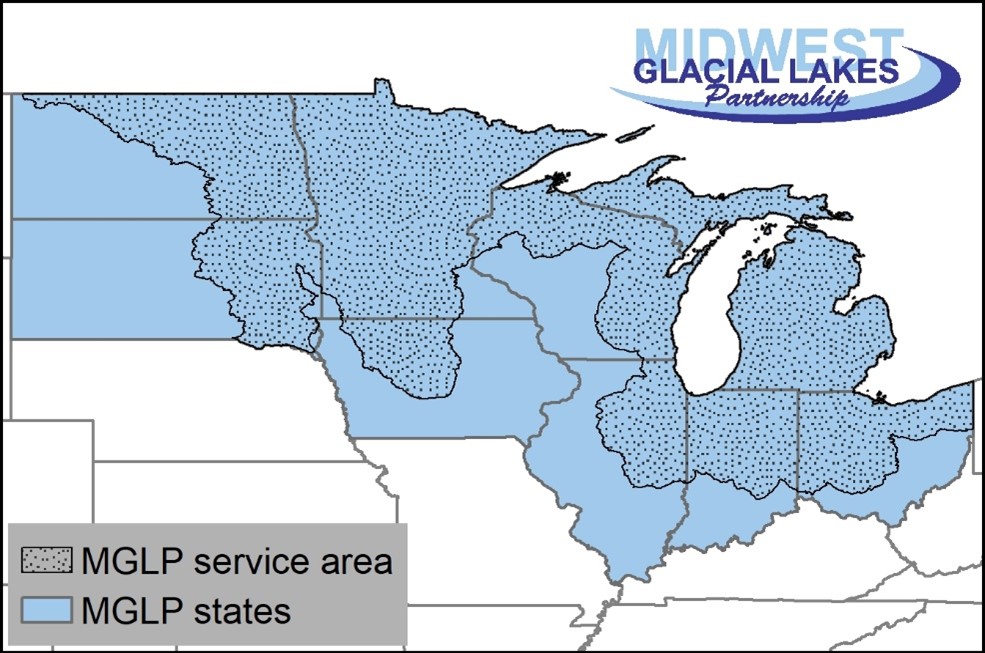
The National Fish Habitat Partnership funding that the MGLP allocates each year includes a portion set aside for operation of the partnership. In addition to contributions from partner agencies, the MGLP uses these funds to coordinate the Midwest Glacial Lakes Partnership’s efforts to research and conserve fish habitats in inland glacial lakes. The coordinator oversees conservation grants, supports and participates in committees, coordinates partner contributions, manages the partnership’s finances, leads revisions to and implementation of the strategic plan, develops partnership identity and presence, provides technical guidance, represents the partnership at various meetings, and ensures communication with other fish habitat partnerships.
